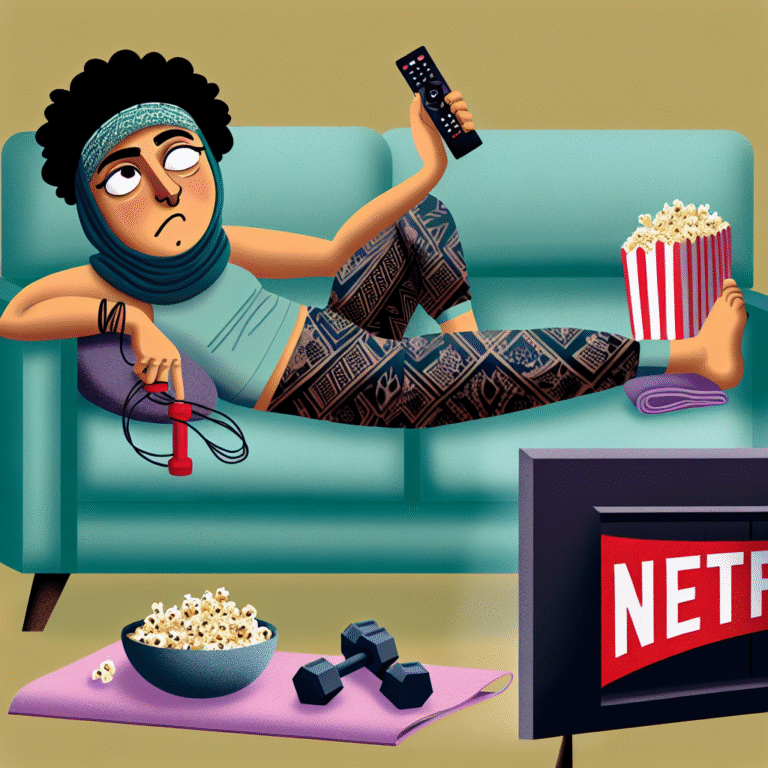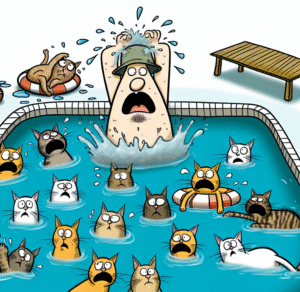- Soreness is a Natural Part of Building Strength: It’s totally normal to feel sore after workouts, especially when you’re just getting started. But don’t worry, not every ache and pain means you’re doing something wrong!
- Your Body Loves Sleep: Seriously, if you want to see magic happen, get some quality Z’s. Your body works its hardest during that restful time!
- Recovery is Personal: Your experience with soreness might be different from someone else’s, and that’s okay—everyone’s body has its quirks.
Introduction: The Confusion of Soreness—Your Body’s Love Letter?
So, you hit the gym for the first time in who-knows-how-long (maybe since your last New Year’s resolution), pumped some iron or did a serious cardio burn, and then, bam! Hello, soreness. But wait, the next day? What sorcery is this? You barely feel it. If that sounds like you, grab a coffee and get comfy, because we’re diving deep into the wild world of muscle soreness—what it means, why it feels like a rollercoaster, and how you can manage it all.
You might be thinking, “Am I the only one?!” Spoiler alert: Nope! Let’s untangle this mess together, because understanding soreness is kind of like trying to solve a Rubik’s Cube: it looks complicated, but once you see the patterns, it’s a blast.
What is Soreness, Anyway? That is the Question!
Let’s break it down. When you work out, especially if you’re doing something new, your muscles experience the dreaded Delayed Onset Muscle Soreness (DOMS). This typically starts 12 to 24 hours after your workout and can last up to 72 hours. Why does this happen? Here’s the lowdown:
Micro-tears: When you lift weights or push your limits, tiny tears occur in your muscle fibers. Your body responds to these little injuries by repairing and strengthening the muscles.
Inflammation: As your body starts its repair work, it creates inflammation around the muscles. Think of it as a protective mechanism, like a bouncer at a club making sure nobody gets in without the right look (or adequate recovery).
Pain Receptors Go Wild: As micro-tears occur, chemical signals travel to your brain, making you feel pain. Yup, it’s like your body’s loud protest saying, “Hey, maybe we shouldn’t do that again!” But in reality? It’s just part of the growth process.
Time for Some Stats!
- Approximately 90% of those who start a new workout program report experiencing DOMS at some point.
- Studies show that about 48% of people never fully adapt to a new exercise, meaning DOMS could be a consistent companion on your fitness journey.
Your Recovery Cycle: Soreness and Sleep—A Love Story
Let’s get one thing straight: your body loves sleep. When you sleep, your muscle repair speeds up thanks to growth hormone levels rising. Imagine your body like a busy restaurant. During the day, it’s serving customers (muscles working), but at night? The chefs are prepping for tomorrow’s menu (muscle recovery).
- During Sleep:
- Growth hormone is released.
- Protein synthesis kicks into high gear.
- Blood flow to the muscles increases.
Ever wonder why you feel less sore the next day? It’s because your body is working hard while you dream. Maybe it’s not granny’s secret recipe, but quality sleep is a key ingredient to fast recovery.
A Closer Look at Muscle Recovery
| Stage of Recovery | Key Activities | Timeline | Soreness Level |
|---|---|---|---|
| Post-Workout | Rehydration, Nutrition | First 30 min | High |
| Day 1 | Active Recovery, Light Stretching | 24-48 hours | Moderate |
| Day 2 | Sleep & Rest | 48-72 hours | Low to Moderate |
| Day 3 + | Normal Activity, Consistency | 72+ hours | None |
Pro-Tip: Incorporate Active Recovery
- Light jogging or cycling: Flush out lactic acid.
- Yoga or stretches: Improve flexibility and reduce stiffness.
- Foam rolling: It’s like giving your muscles a gentle massage without the awkward small talk.
The Ups and Downs: Advantages & Disadvantages of Soreness
Now that we’ve laid down the basics, let’s chat about the pros and cons of soreness.
Advantages
- Muscle Growth: Soreness is a sign you’re making your muscles work harder, leading to growth and adaptation.
- Increased Strength: Continuously challenging your muscles will eventually lead to superior performance.
- Injury Prevention: When you understand your limits, you adjust your workouts accordingly, preventing overtraining.
Disadvantages
- Motivation Drain: Constant soreness can be demotivating. You might think, “I’m always sore; why even bother?”
- Risk of Overtraining: Too much soreness can lead to injury and burnout.
- Romanticizing Pain: Some people think soreness proves they had a good workout, which can lead to unhealthy training practices.
Looking Ahead: Future Impact of Understanding Soreness in Fitness Regimes
As technology continues to advance, so does our understanding of muscle physiology. From apps that track recovery to wearables that monitor muscle strain, the future is leaning heavily on data-driven insights. Imagine a world where your fitness bracelet can tell you when you’re overdoing it or how much rest you need before that next workout.
Here’s a fun thought: What if AI could help you create customized recovery plans? Instead of relying on trial and error, you’d be armed with a smart coach, always tuned to your body’s signals.
The Future of Fitness: A Centralized Approach
- Personalized Training: AI-driven systems could analyze individual fitness data, providing tailored workout plans.
- Recovery Tracking: Imagine wearables sending alerts on optimal rest periods!
- Holistic Programs: Combining physical training with sleep, nutrition, and mental health components.
Navigating the Ethics of Soreness: A Critical Perspective
While fitness culture often glamorizes soreness, it’s important to navigate these waters prudently. Should we really value muscle pain as a badge of honor?
Inclusivity in Fitness: Not everyone can or should strive for soreness as a goal. We must advocate for individual progress, allowing people to embrace their own fitness journey without societal pressure.
Health Above All: Let’s shift the narrative from one of pain to one focused on health and well-being. It’s essential to emphasize that working out should never cause long-term injury or distress.
Conclusion: Life Beyond Soreness
So, you may feel occasionally baffled by soreness and recovery. That’s part of the journey—your body’s way of talking back. Embrace it! Use workouts as opportunities to strengthen your body and mind, and understand that soreness doesn’t always equate to success.
As you continue your fitness journey, remember this mantra: recovery is just as important as the workouts. Listen to your body, hydrate, get enough sleep, and enjoy the ride. Everyone’s path to fitness looks different—embrace yours with a wink and a nod. Who knew that muscle soreness could lead to such fascinating insights about your body’s inner workings?
Relish the experience, take the hiccups with a pinch of salt, and keep chasing healthy gains (hopefully without too much soreness!). Now get out there, and embrace the next workout with confidence—because you’ve got this, DOMS and all!
Keywords: soreness, delayed onset muscle soreness, recovery, muscle growth, fitness journey, workout plan, active recovery, sleep, inflammation, personalized training.





